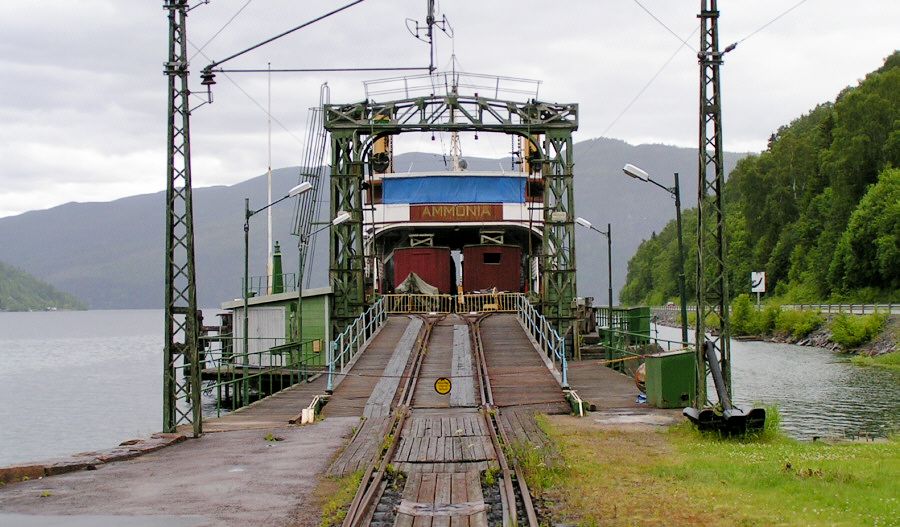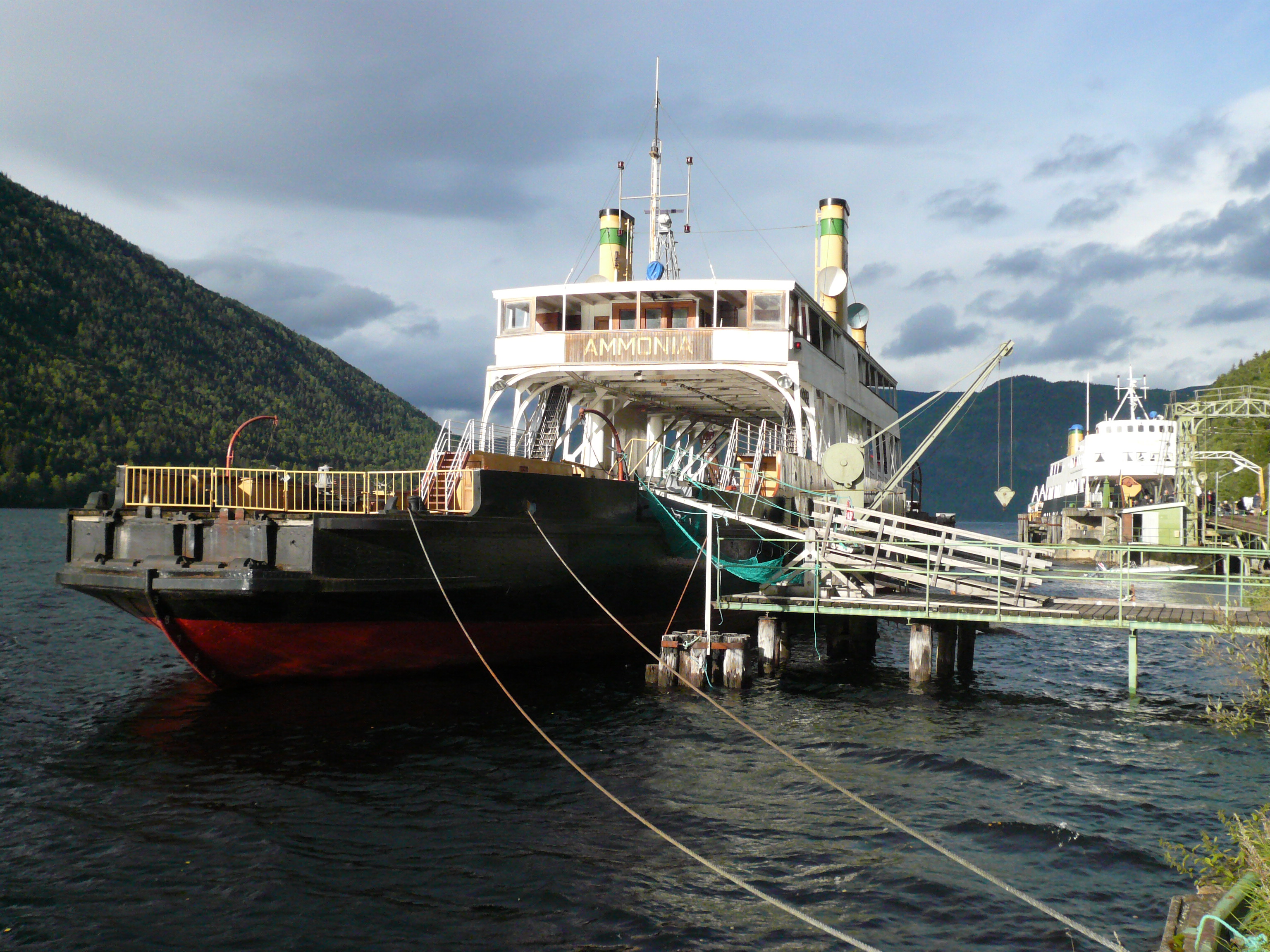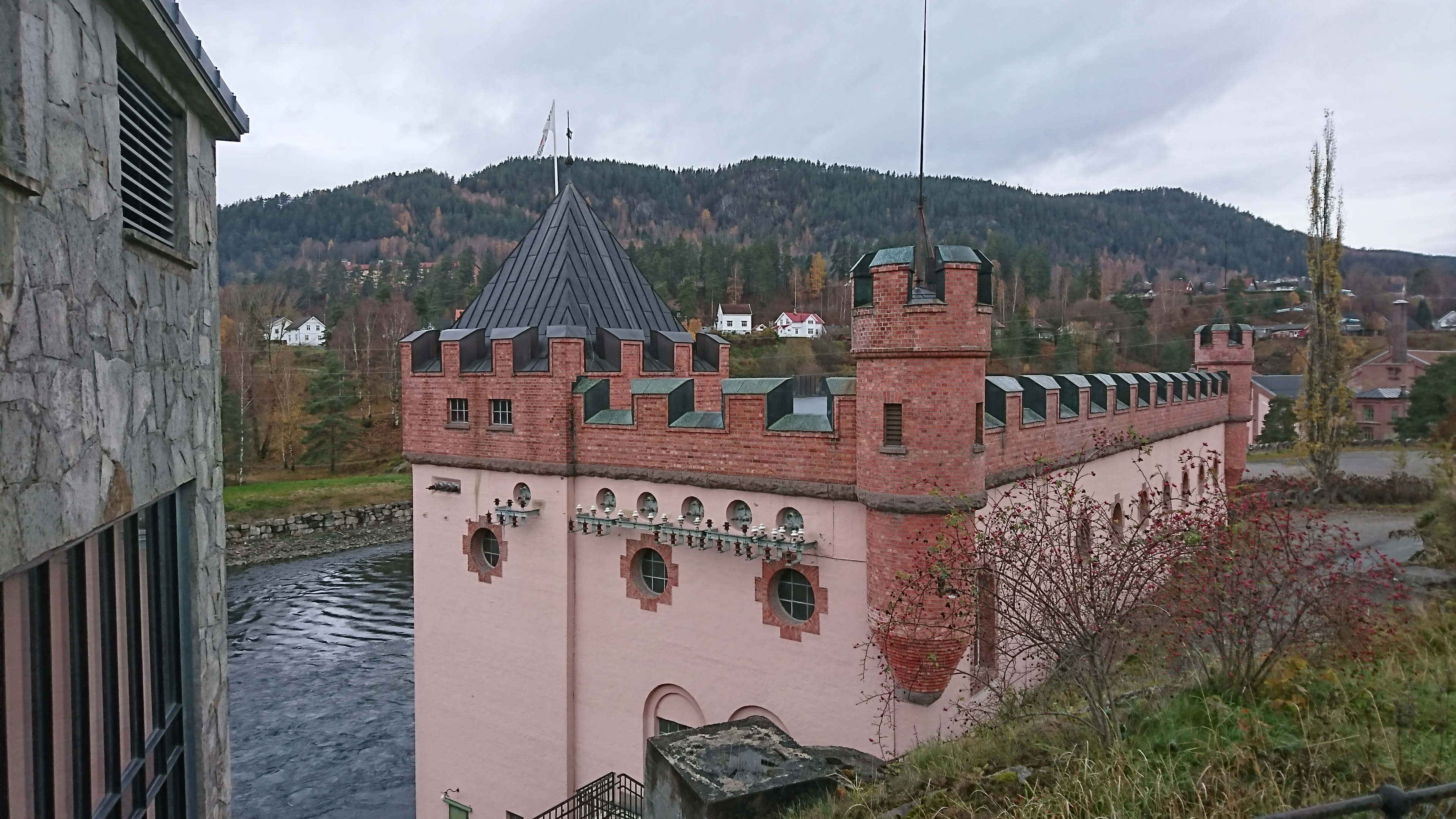|
Tinnoset
Tinnoset is a village in the municipality of Notodden in Telemark, Norway. It is located at the southernmost end of Lake Tinn (''Tinnsjå''). Tinnoset Station is the terminus of the Tinnoset Line, a 30-kilometer (19 mi) long railway line that went from Tinnoset to the city of Notodden. At Tinnoset Station were the docks which from 1909 until 1991, units of the Tinnsjø railway ferry system connected the Tinnoset Line to the Rjukan Line through the use of a railway ferry service which crossed Lake Tinn. See also *Mæl Station Mæl Station (''Mæl stasjon'') is a railroad station located at Tinn in Telemark, Norway. It is the terminus of the Rjukan Line (''Rjukanbanen'') running through Vestfjorddalen between Mæl and Rjukan. The station is located 16 km from Rju ... References Villages in Vestfold og Telemark Notodden {{Telemark-geo-stub ... [...More Info...] [...Related Items...] OR: [Wikipedia] [Google] [Baidu] |
Tinnoset Line
, logo = , logo_width = , logo_alt = , image_name = MF-Storegut Tinnoset 2004 SRS.jpg , image_width = , image_alt = , caption = The railway ferry MF ''Storegut'' at Tinnoset , color = , locale = , terminus = , map = , map_caption = , map_alt = , mapsize = , connections = , linename = , builtby = Norsk Hydro , originalopen = 9 August 1909 , originalgauge = , originalelec = , owned = , operator = , marks = , stations = , length = , preservedgauge = , preservedelec = , era = , com-years = , com-events = , com-years1 = , com-events1 = , closedpassengers = 1985 , closed = ... [...More Info...] [...Related Items...] OR: [Wikipedia] [Google] [Baidu] |
Tinnoset Station
Tinnoset Station ( no, Tinnoset stasjon) is a disused railway station on the Tinnoset Line located at Tinnoset in Notodden, Norway. At the station's docks wagons were transferred from trains to the Tinnsjø railway ferry. The station building is built in a nationally romantic style with logs, designed by architect Thorvald Astrup Thorvald Astrup (18 May 1876 – 12 August 1940) was a Norwegian architect, particularly known for industrial architecture. He was born in Kristiania (now Oslo), Norway. He was the son of city captain Harald Astrup and Johanne Emilie Smith. .... It was finished in 1908 but did not open until August 9, 1909. It remained staffed until 1988. On January 1, 1991, the station closed after all passenger traffic was ended on the Tinnoset Line, as was freight traffic the following summer. References Railway stations on the Tinnoset Line Railway stations in Notodden Railway stations opened in 1909 Railway stations closed in 1991 Disused railway st ... [...More Info...] [...Related Items...] OR: [Wikipedia] [Google] [Baidu] |
Tinnoset Stasjon 01
Tinnoset is a village in the municipality of Notodden in Telemark, Norway. It is located at the southernmost end of Lake Tinn (''Tinnsjå''). Tinnoset Station is the terminus of the Tinnoset Line, a 30-kilometer (19 mi) long railway line that went from Tinnoset to the city of Notodden. At Tinnoset Station were the docks which from 1909 until 1991, units of the Tinnsjø railway ferry system connected the Tinnoset Line to the Rjukan Line through the use of a railway ferry service which crossed Lake Tinn. See also *Mæl Station Mæl Station (''Mæl stasjon'') is a railroad station located at Tinn in Telemark, Norway. It is the terminus of the Rjukan Line (''Rjukanbanen'') running through Vestfjorddalen between Mæl and Rjukan. The station is located 16 km from Rju ... References Villages in Vestfold og Telemark Notodden {{Telemark-geo-stub ... [...More Info...] [...Related Items...] OR: [Wikipedia] [Google] [Baidu] |
Rjukan Line
, logo = , logo_width = , logo_alt = , image = , image_name = , image_width = , image_alt = , caption = SF ''Ammonia'', at Mæl, where the railway cars were ferried across Lake Tinn , color = , locale = , terminus = Rjukan StationMæl Station , map = , map_caption = , map_alt = , mapsize = , connections = , linename = , builtby = Norsk Transport , originalopen = 9 August 1909 , originalgauge = , originalelec = , owned = , operator = , marks = , stations = 6 , length = , preservedgauge = , preservedelec = , era = , com-years = , com-events = , com-years1 = , com-events1 = ... [...More Info...] [...Related Items...] OR: [Wikipedia] [Google] [Baidu] |
Tinnsjø Railway Ferry
Tinnsjø railway ferry was a Norwegian railway ferry service on Lake Tinn that connected the Rjukan Line and Tinnoset Line. The long ferry trip made it possible for Norsk Hydro to transport its fertilizer from the plant at Rjukan to the port in Skien. The ferry services were operated by the company's subsidiary Norsk Transport from 1909 to 1991, when the plant closed. One of the ferries was in 1944 the target of the Norwegian heavy water sabotage when it was sunk to depth to prevent Nazi Germany from developing nuclear weapons. History Norsk Hydro was founded in 1905 by engineer and industrialist Sam Eyde as a fertilizer manufacturer. The first factory was opened at Notodden in 1907. Fertilizer factories need a lot of energy, making it beneficial to locate the plants near hydroelectric power plants. At Rjukan there was a large waterfall capable of supporting a hydroelectric plant. By 1911 Rjukan Salpeterfabrikk was opened. The Tinnsjø railway ferry service was opened in 1 ... [...More Info...] [...Related Items...] OR: [Wikipedia] [Google] [Baidu] |
Telemark
Telemark is a traditional region, a former county, and a current electoral district in southern Norway. In 2020, Telemark merged with the former county of Vestfold to form the county of Vestfold og Telemark. Telemark borders the traditional regions and former counties of Vestfold, Buskerud, Hordaland, Rogaland and Aust-Agder. The name ''Telemark'' means the "mark of the Thelir", the ancient North Germanic tribe that inhabited what is now known as Upper Telemark in the Migration Period and the Viking Age. In the Middle Ages, the agricultural society of Upper Telemark was considered the most violent region of Norway. Today, half of the buildings from medieval times in Norway are located here. The dialects spoken in Upper Telemark also retain more elements of Old Norse than those spoken elsewhere in the country. Upper Telemark is also known as the birthplace of skiing. The southern part of Telemark, Grenland, is more urban and influenced by trade with the Low Countries, no ... [...More Info...] [...Related Items...] OR: [Wikipedia] [Google] [Baidu] |
Mæl Station
Mæl Station (''Mæl stasjon'') is a railroad station located at Tinn in Telemark, Norway. It is the terminus of the Rjukan Line (''Rjukanbanen'') running through Vestfjorddalen between Mæl and Rjukan. The station is located 16 km from Rjukan and on the mouth of the river Måna in Vestfjorddalen where the river runs into Lake Tinn. This was the point where the railway cars on the line were transferred to the Tinnsjø railway ferry for transport to the Tinnoset Line. History Mæl Station was constructed based upon designs by architect, Thorvald Astrup. The station was built in 1909 when the Rjukan Line opened and was electrified in 1911. A new station building was constructed in 1917; it was named Rollag until 1921 when it had to change name because of the connection to the national railway network—there was already Rollag Station on the Numedal Line The Numedal Line () is a long railway line that runs up the Numedal valley between Kongsberg and Rødberg in Viken co ... [...More Info...] [...Related Items...] OR: [Wikipedia] [Google] [Baidu] |
Notodden
Notodden () is a List of towns and cities in Norway, city and List of municipalities of Norway, municipality in Vestfold og Telemark Counties of Norway, county, Norway. It is part of the Districts of Norway, traditional region of Øst-Telemark. The administrative centre of the municipality is the city of Notodden. Notodden was separated from the municipality of Heddal in 1913 to become a separate city and municipality. On 1 January 1964, the rural municipalities of Heddal and Gransherad were merged into Notodden to form a new enlarged municipality. Notodden is on the shore of Heddalsvatnet lake, and the Tinnelva, Tinn River runs through the town into the lake. Norway's biggest stave church, Heddal Stave Church, can be seen a few kilometres from the city centre. Notodden Airport, Tuven, is located west of the city centre. Norsk Hydro was founded in this town. Notodden is well known for the annual Notodden Blues Festival, which is considered one of the best blues festivals in ... [...More Info...] [...Related Items...] OR: [Wikipedia] [Google] [Baidu] |
Norway
Norway, officially the Kingdom of Norway, is a Nordic country in Northern Europe, the mainland territory of which comprises the western and northernmost portion of the Scandinavian Peninsula. The remote Arctic island of Jan Mayen and the archipelago of Svalbard also form part of Norway. Bouvet Island, located in the Subantarctic, is a dependency of Norway; it also lays claims to the Antarctic territories of Peter I Island and Queen Maud Land. The capital and largest city in Norway is Oslo. Norway has a total area of and had a population of 5,425,270 in January 2022. The country shares a long eastern border with Sweden at a length of . It is bordered by Finland and Russia to the northeast and the Skagerrak strait to the south, on the other side of which are Denmark and the United Kingdom. Norway has an extensive coastline, facing the North Atlantic Ocean and the Barents Sea. The maritime influence dominates Norway's climate, with mild lowland temperatures on the se ... [...More Info...] [...Related Items...] OR: [Wikipedia] [Google] [Baidu] |
Lake Tinn
A lake is an area filled with water, localized in a basin, surrounded by land, and distinct from any river or other outlet that serves to feed or drain the lake. Lakes lie on land and are not part of the ocean, although, like the much larger oceans, they do form part of the Earth's water cycle. Lakes are distinct from lagoons, which are generally coastal parts of the ocean. Lakes are typically larger and deeper than ponds, which also lie on land, though there are no official or scientific definitions. Lakes can be contrasted with rivers or streams, which usually flow in a channel on land. Most lakes are fed and drained by rivers and streams. Natural lakes are generally found in mountainous areas, rift zones, and areas with ongoing glaciation. Other lakes are found in endorheic basins or along the courses of mature rivers, where a river channel has widened into a basin. Some parts of the world have many lakes formed by the chaotic drainage patterns left over from the last ic ... [...More Info...] [...Related Items...] OR: [Wikipedia] [Google] [Baidu] |
Train Ferry
A train ferry is a ship (ferry) designed to carry railway vehicles. Typically, one level of the ship is fitted with railway tracks, and the vessel has a door at the front and/or rear to give access to the wharves. In the United States, train ferries are sometimes referred to as "car ferries", as distinguished from "auto ferries" used to transport automobiles. The wharf (sometimes called a "slip") has a ramp, and a linkspan or "apron", balanced by weights, that connects the railway proper to the ship, allowing for tidal or seasonal changes in water level. While railway vehicles can be and are shipped on the decks or in the holds of ordinary ships, purpose-built train ferries can be quickly loaded and unloaded by roll-on/roll-off, especially as several vehicles can be loaded or unloaded at once. A train ferry that is a barge is called a car float or rail barge. History An early train ferry was established as early as 1833 by the Monkland and Kirkintilloch Railway. To extend th ... [...More Info...] [...Related Items...] OR: [Wikipedia] [Google] [Baidu] |





